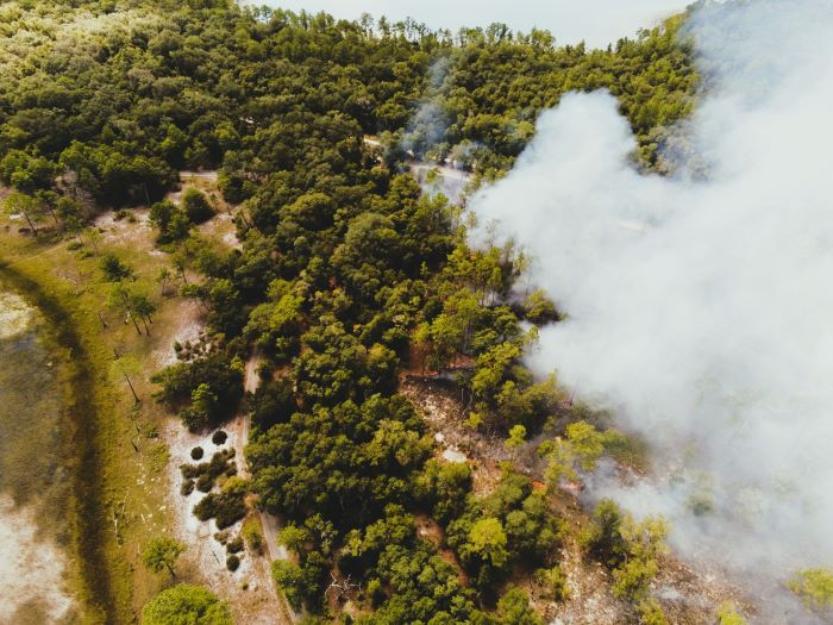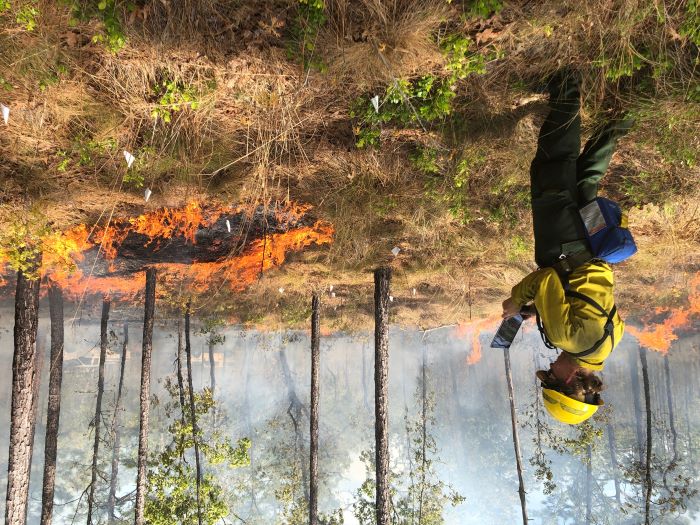Role of Fire
Fire is naturally occurring through summer lightning storms in Southern ecosystems like those that occur on the station. These ecosystems are pyrogenic, or reliant on fire to succeed. The exclusion and suppression of fire has changed these ecosystems throughout the Southeast, altering the robustness of the longleaf pine and, as a result, many of the species that rely on these ecosystems. Fire can act as a medication for these systems. In order to reintroduce fire after exclusion, land managers write a prescription, with detail on the structure of the habitat and the weather conditions needed to use fire safely and effectively. Fire is used as a medication to keep the longleaf pine system healthy, allowing for native plants and animals to thrive. This process is known as prescribed burning.



